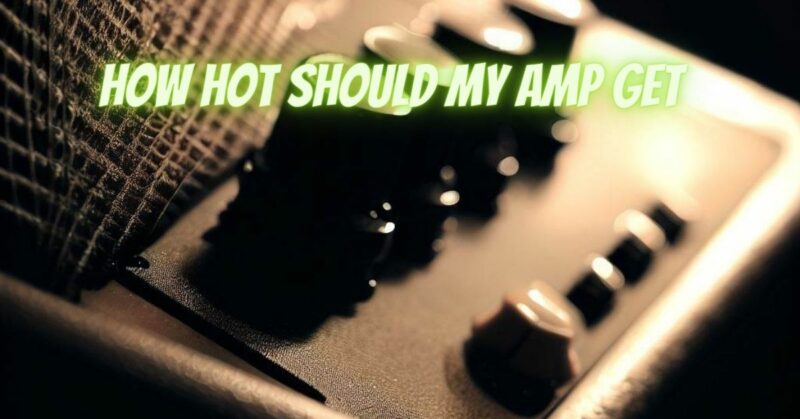Amplifiers, the heart of any audio system, are known to generate heat during operation. The question that often arises is: How hot should my amp get? Understanding safe operating temperatures for amplifiers is crucial to ensure optimal performance, longevity, and overall audio quality. In this article, we’ll explore the factors that contribute to amplifier heat, the acceptable temperature ranges, and steps you can take to ensure your amplifier’s health.
Understanding Amplifier Heat:
Amplifiers, whether solid-state or tube-based, generate heat as a byproduct of their electrical components’ operation. This heat is primarily produced by the amplifier’s internal components, such as transistors, transformers, and power supply circuitry.
Factors Influencing Amplifier Heat:
- Amplifier Class: Different amplifier classes generate varying amounts of heat. Class A amplifiers, for instance, tend to run hotter due to their continuous operation, while Class AB amplifiers generate less heat because they operate in a balanced mode.
- Output Power: Higher output power levels demand more electrical current, leading to increased heat generation.
- Ambient Temperature: The temperature of the environment in which the amplifier operates plays a significant role in its heat dissipation. A hot environment may require additional cooling measures.
- Internal Components: The quality and design of internal components, such as heat sinks and cooling fans, impact the amplifier’s ability to dissipate heat.
Safe Operating Temperatures:
The safe operating temperature of an amplifier varies based on its design, class, and specifications. However, there are general guidelines you can follow:
- Warm to the Touch: It’s common for amplifiers to feel warm to the touch during operation. If the surface of the amplifier becomes uncomfortably hot, it may be a sign of inadequate heat dissipation.
- Measure the Temperature: Some amplifiers come with built-in temperature sensors that allow you to monitor the internal temperature. If your amplifier doesn’t have this feature, you can use an infrared thermometer to measure its surface temperature.
- Manufacturer’s Specifications: Refer to the manufacturer’s guidelines for safe operating temperatures. These specifications provide valuable insights into what temperature range your specific amplifier is designed to handle.
Preventing Overheating:
To ensure your amplifier operates within safe temperature ranges:
- Proper Ventilation: Place your amplifier in a well-ventilated area to allow heat to dissipate naturally. Avoid enclosing the amplifier in tight spaces.
- Cooling Fans: If your amplifier has built-in cooling fans, ensure they are functional and unobstructed.
- Airflow: Avoid stacking other equipment on top of the amplifier, as this can impede airflow and lead to overheating.
- Avoid Overloading: Running an amplifier at its maximum power output for extended periods can increase heat generation. Ensure your speakers’ impedance matches the amplifier’s specifications.
Amplifier heat is a natural aspect of their operation, but ensuring safe operating temperatures is vital for their performance and longevity. By being aware of the factors that contribute to heat generation and taking appropriate measures to manage it, you can enjoy your amplifier’s optimal sound quality without compromising its health. Regularly monitor the amplifier’s temperature, adhere to manufacturer’s guidelines, and provide proper ventilation to maintain a harmonious balance between amplification and heat dissipation.


